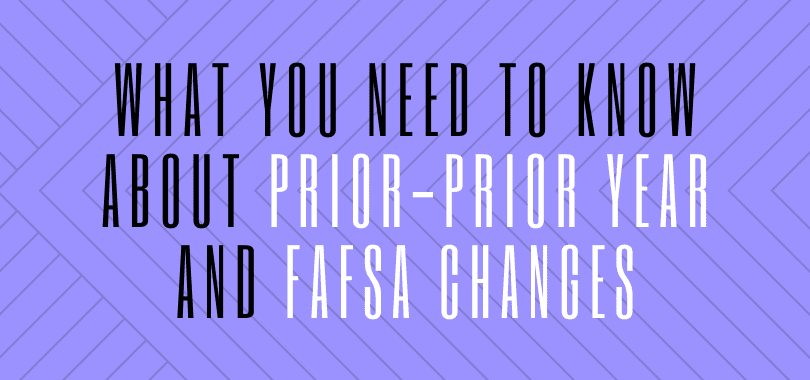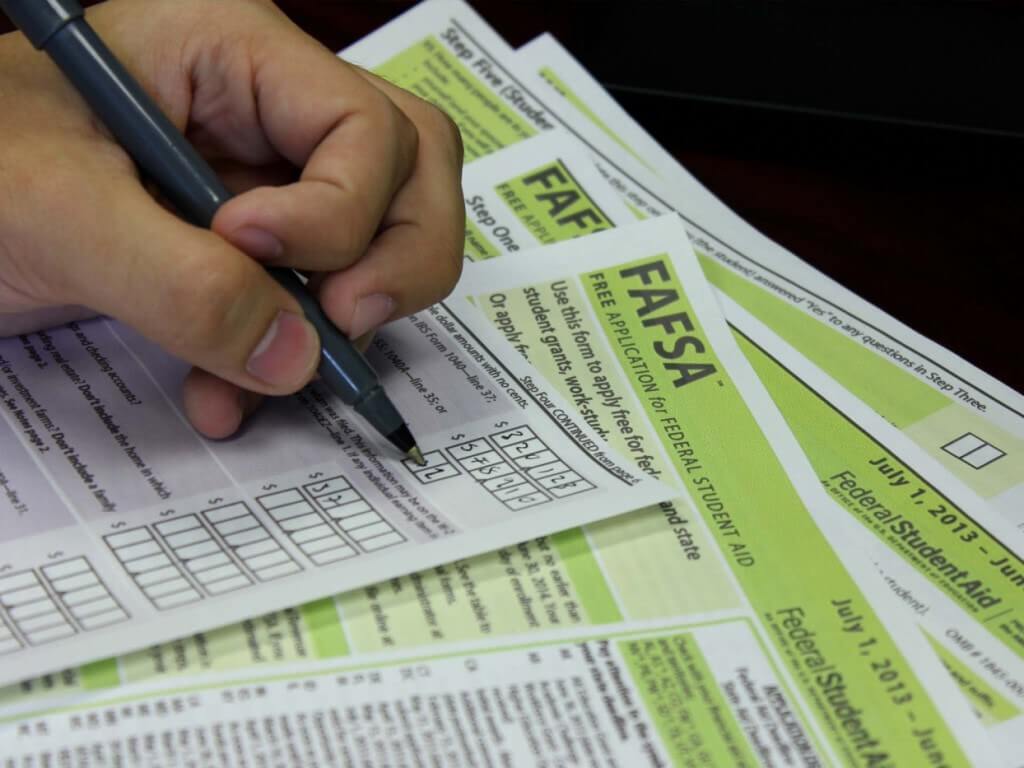If you’re thinking about college, you’ve probably heard of FAFSA. What is it? And how is it changing? FAFSA stands for Free Application for Federal Student Aid. FAFSA is a part of the United States Department of Education and provides more than $150 billion in student aid in the form of grants, loans, and work-study options.
In the past, you could file your FAFSA anytime after January 1st, using your prior year income data. As of September 14th, 2015, President Obama changed the format to include using prior-prior year data when filing. That’s right, now you can submit after October 1st, using your prior-prior year income data.
What does prior-prior year mean?
For example: If you or your student is planning on attending college in Fall 2017 (2017-2018 school year) you can file FAFSA on October 1st, 2016, using 2015 income data.
If you are entering your sophomore or junior year, you probably used your 2015 income data to file your FAFSA after January 1st, 2016 for the upcoming 2016-2017 school year.
Now, after October 1st, 2016, you can use your 2015 income data again to file your FAFSA for the 2017-2018 school year.
Is this a good thing?
It can be! You will probably hear many bits of advice from an array of people that you should file as soon as possible after January 1st. The reason behind this is because many colleges operate on a first-come, first-served basis until the money runs out. So, by filing your FAFSA early, you are improving your odds of receiving aid rather than waiting until the last minute.
Now that the timeline has moved to October 1st, you can apply sooner and hear back from colleges earlier than ever before. This accelerated timeline will hopefully result in colleges sending you your award letter sooner. This is beneficial because it can provide you a better picture of what it will cost to attend a school and help you in the process of selecting a college.

What does this mean for colleges?
When filing FAFSA, students can select up to 10 schools to receive their financial information. In the past, colleges could see the other schools on your list. That changed for the 2016-2017 filing. That can be good news for students. Some experts speculated that a student’s chosen school list impacted college’s decisions on financial aid matters. Now without that insight, it’s possible decisions will be made more objectively.
What about the CSS Profile?
We have covered what FAFSA is. What is the CSS Profile? FAFSA does an excellent job of providing financial aid to lower-income students and CSS Profile is often recognized as a financial aid form to spread wider across income levels. This is what many private and top tier Ivy League schools look at. The College Board is an organization that prepares and administers standardized tests (notably the SAT) that are used in college placement.
When the new Prior Prior Year rules came out for FAFSA, many questioned whether the CSS Profile would follow suit. They did. Now regardless of your income or intended schools, you will have an award letter sooner than ever. This is good news. It’s no secret college is expensive and knowing what financial aid you will receive from an institution is important in making the decision of what college is the right fit for you. With these new mandates, that decision may happen sooner than ever.
Use College Raptor to discover personalized college matches, cost estimates, acceptance odds, and potential financial aid for schools around the US—for FREE!
| Lender | Rates (APR) | Eligibility | |
|---|---|---|---|
 |
5.50%-16.12%* Variable
3.99%-15.61%* Fixed
|
Undergraduate and Graduate
|
VISIT CITIZENS |
 |
5.54% - 15.70% Variable
3.99% - 15.49% Fixed
|
Undergraduate and Graduate
|
VISIT SALLIE MAE |
 |
4.63% - 17.99% Variable
3.49% - 17.99% Fixed
|
Undergraduate and Graduate
|
VISIT CREDIBLE |
 |
6.00% - 13.75% Variable
3.99% - 13.75% Fixed
|
Undergraduate and Graduate
|
VISIT LENDKEY |
 |
5.66% - 14.72% Variable
3.69% - 14.56% Fixed
|
Undergraduate and Graduate
|
VISIT ASCENT |
 |
3.70% - 8.75% Fixed
|
Undergraduate and Graduate
|
VISIT ISL |
 |
5.62% - 16.85% Variable
3.69% - 16.49% Fixed
|
Undergraduate and Graduate
|
VISIT EARNEST |
 |
5.00% - 14.22% Variable
3.69% - 14.22% Fixed
|
Undergraduate and Graduate
|
VISIT ELFI |







Thanks for the heads up. As a career counselor, I anticipate this to be very helpful for the families I work with as they prepare for college. It gives more breathing room, and they could use it that senior year.